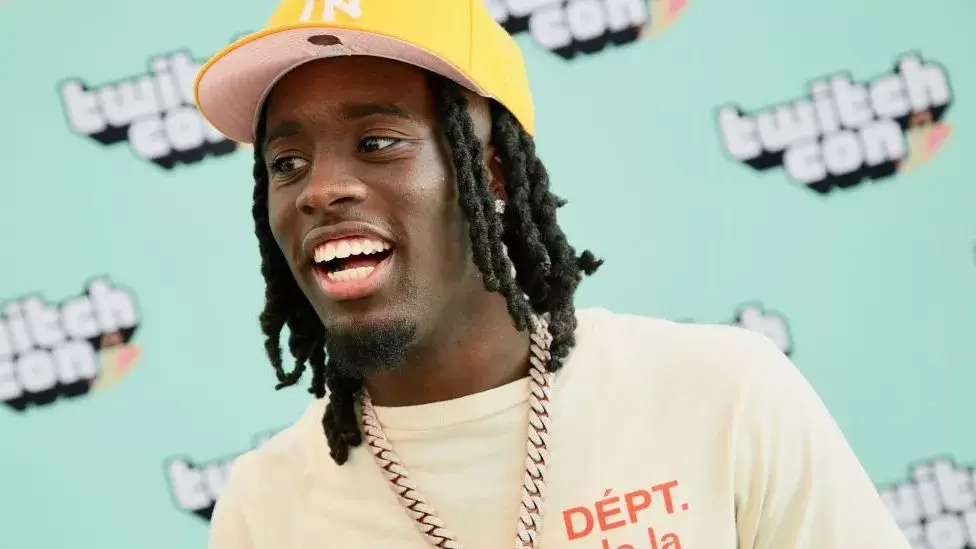In the realm of unconventional online trends, a peculiar yet profitable one has emerged – the world of “sleep streamers.” Platforms like YouTube, TikTok, and Twitch have become hosts to these peculiar live streams, where individuals broadcast themselves while they sleep cozily under the covers. While the notion might seem strange at first, it has garnered a surprising amount of attention and even financial gains for some.
One notable figure in this unique landscape is Kai Cenat, who recently made headlines for his involvement in inciting a riot in the US. Interestingly, he’s also at the center of the sleep-streaming phenomenon. It’s estimated that he raked in tens of thousands of dollars during a month-long uninterrupted sleep stream in March. Another well-known streamer, Amouranth, revealed on The Iced Coffee Hour podcast that she can earn as much as $15,000 from a single sleep stream.
For viewers, these sleep streams offer an intriguing blend of companionship and entertainment. The idea of having someone to fall asleep with, even virtually, resonates with many, creating a sense of community in an otherwise solitary activity.
This concept of watching people sleep might appear novel, but it’s not entirely unprecedented. Back in the early 2000s, the reality show “Big Brother” gained worldwide attention, and the 24-hour live streams capturing housemates sleeping became an unexpected online hit. Moreover, in 2004, the National Portrait Gallery unveiled a one-hour video featuring footballer David Beckham in the act of slumber.
As the sleep streaming trend evolves, variations have begun to emerge. Some viewers are now paying to keep streamers awake rather than watching them sleep. By making donations, viewers can trigger disruptive elements such as loud noises, alerts, flickering lights, and other disturbances to prevent the streamer from dozing off. This twist on the concept turns the experience into a live-action video game, where the streamer’s goal is to sleep while viewers endeavor to keep them awake.
The origins of this trend can be traced back to TikTok, where “sleepfluencers” like Jakey Boehm and Stanley (also known as StanleyMov) have gained prominence. StanleyMov, for instance, claims to make enough money from occasional sleep streams to cover his rent. Viewers are willing to pay significant amounts for unique privileges, such as administering an electric shock through a bracelet worn by StanleyMov. He explained that for him, these sleep streams are primarily content creation for his YouTube channel. He suggested that the appeal might be rooted in an odd fascination with seeing others in discomfort or pain.
Despite the financial gains associated with sleep streams, some individuals are grappling with the toll it takes on their mental health. StanleyMov, for instance, mentioned that he’s taken a break due to mental health and burnout. He highlighted the extensive effort required in managing his content creation, including recording, editing, and uploading videos multiple times a week. He emphasized the burden of both streaming and editing simultaneously.
The question arises: Is the monetary reward sufficient to justify this trend? Dr. Lindsay Browning, an expert in sleep and author of the self-help book “Navigating Sleeplessness,” offered two perspectives. On one hand, science underscores the myriad benefits of regular, quality sleep. However, practical life often interferes with this ideal scenario due to various factors like illness or responsibilities. Dr. Browning’s work often involves aiding those who struggle with insomnia, and she suggested that overcoming the fear of an occasional night of poor sleep is essential.
While sleep streams may not seem like an ideal endeavor on the surface, Dr. Browning likened them to occasionally indulging in activities like drinking on a Friday night with friends – not necessarily the best choice, but not catastrophic either. She even proposed that participating in sleep streams occasionally for the purpose of earning extra income could be reasonable.
Beyond the shock-induced disruptions, it’s the sense of camaraderie that draws people back to sleep streamers like Amouranth and Kai Cenat, even when they’re in a state of slumber. StanleyMov succinctly put it, “People watch it for comfort. They feel like they’re not alone.”
In a digital age that continually pushes boundaries and explores the unorthodox, the rise of sleep streaming stands as a testament to both human curiosity and the inherent need for connection, even in the most unlikely circumstances.





